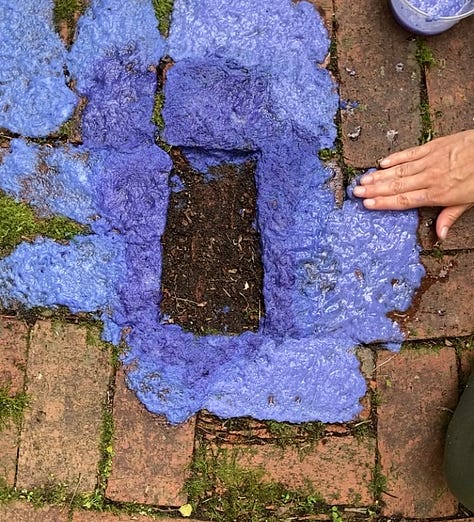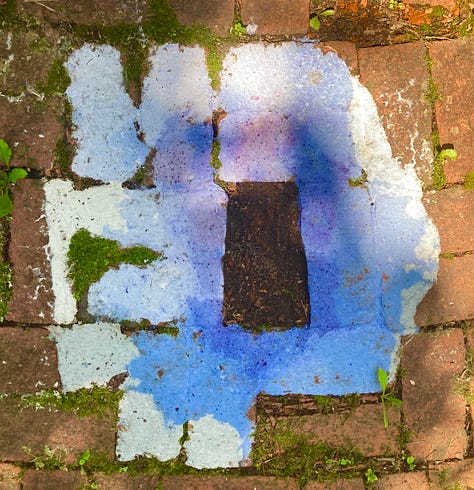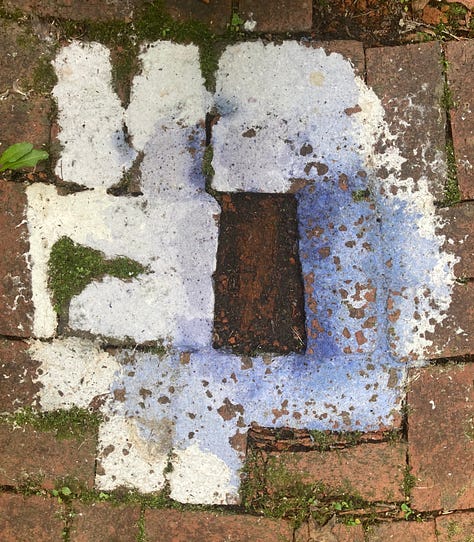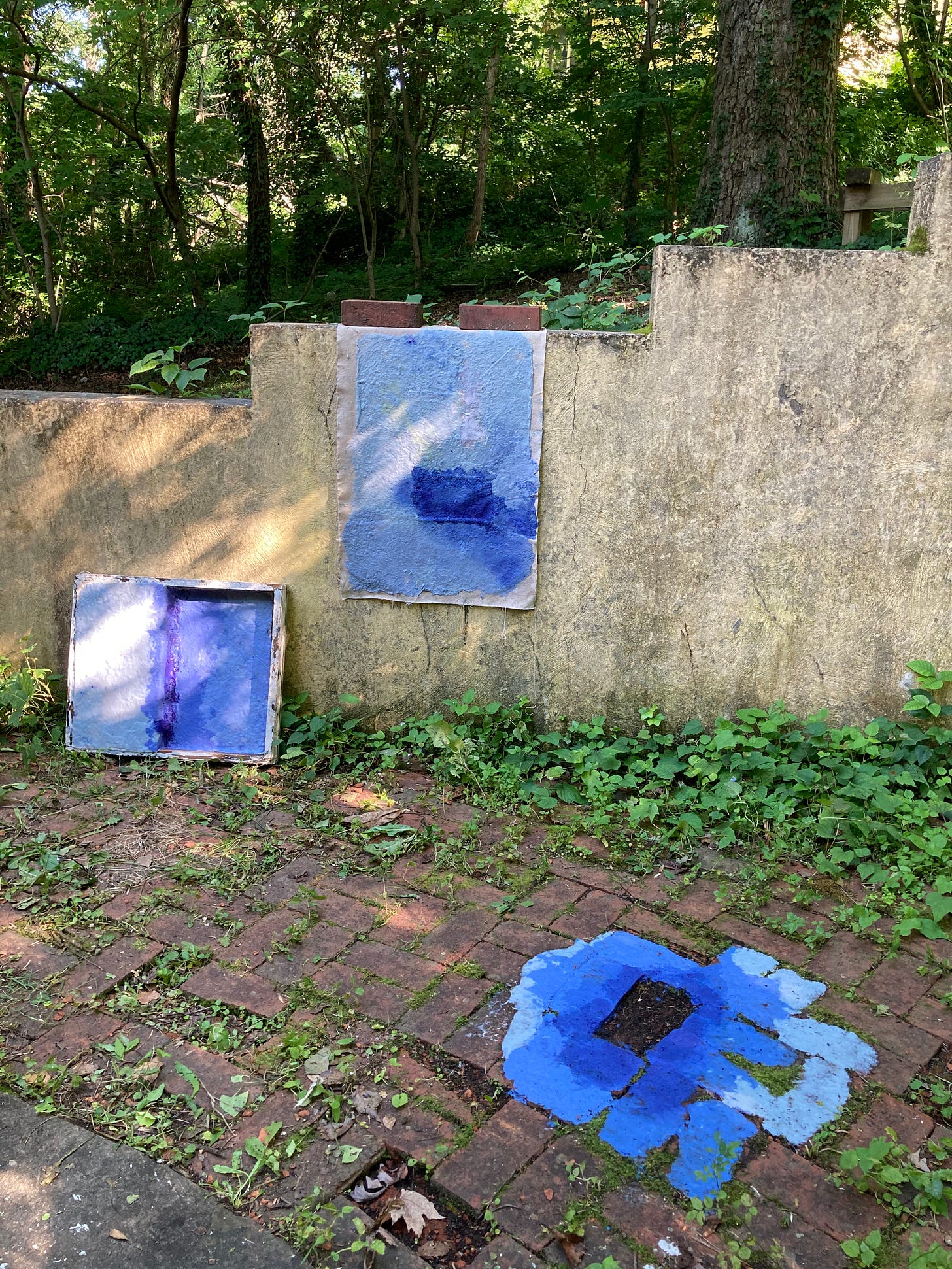
Handmade paper, like river stones, looks better when it’s wet. Materials tend to show you their aliveness when you work with them over time. You get to know their life cycles, their preferences, when they like to be active and when they like to rest. They might change temperature, vibrate, or show you their secret colors. And, despite all our human efforts to alter these life cycles, materials, who are, themselves, disinterested in human-made categories of animate / inanimate, will tell us when it is time for them to fade, flake, break apart, transform and merge with other life cycles.
When is a piece finished? Is there one kind of finished or several kinds? What we see in exhibitions, what gets bought and sold, is not that moment of materials responding to hands and tools, to surfaces, to atmospheric conditions and each other. It is something else. It is a breath held, a game of freeze tag suspended.
This summer, I have been making handmade paper pieces outdoors, in a wooded perch along the Severn river in Annapolis, Maryland. I brought with me, from my studio in Red Hook, Brooklyn, a bucket of abaca pulp, a fiber used in hand papermaking from the abaca plant native to the Philippines, and cotton linter, made from cotton seed. I had been thinking about the atmosphere, about atmospheric conditions. I wanted to explore the ways that I might collaborate with the atmosphere, to set up the material conditions that might allow the atmosphere to draw its own portrait in this moment. So, I tinted the wet pulp with litmus, a dye made from several species of lichen. Litmus paper is used as a pH indicator: blue litmus paper turns red under acidic conditions, red litmus paper turns blue under alkaline conditions, and neutral litmus paper is purple.
I applied the lichen-tinted pulp in mosslike patches to various surfaces in my environment and to pieces of raw, unstretched canvas left outside and unprotected from rain and insects, slugs and snails, falling walnuts and seeds dropped by the warblers, wrens, chickadees, cardinals and robins. I watched for color changes. I learned that aphid poop, called “honeydew,”accents the neutral purple paper with lovely flecks of red. I waited for more, excited to see if my experiment in colorimetric reagents might reveal to me some new atmospheric language.
And, it did, but it was a language that was much more subtle that I’d imagined. While the phrase “litmus test” indicates definitive results, working with this lichen dye yielded a beautiful spectrum of indeterminacy. The colors changed continuously. A blender full of deep blue pulp might become bright purple with the addition of rainwater, but then turn blue again the next time the same bucket of water was added to the mix. An area of purple on a concrete retaining wall might go red for a moment, and then dry blue. The continuous color changes turned the making process into a wild choreography of shifting compositional arrangements. I thought I might keep track of these changes, codifying them into a Werner style color chart like a budding naturalist of the anthropocene. But as the process drew me in, whispering its intimacies, it reminded me that all language is alive, moving and changing, more dance than document.

Enjoying these color changes, I reflected on what it means to finish anything. Is being finished tied to an audience? Does the pleasure that I, alone, take in witnessing the vibrant colors of wet paper pulp constitute completion? Is my work more complete when other people join me in witnessing this vibrancy? I wondered who else, in this environment, might be enjoying the colors? Perhaps the birds, with their capacity to see color that far exceeds human vision, were watching, from their arboreal auditorium, a shifting, shimmering spectrum of unimaginable blues, purples and red (their occasional fecal additions further enlivening the visual field with dynamic color reactions for other avian art enthusiasts). Is the artwork more more complete when the paper has dried on the brick? Is it more finished when it is speckled by dirt, broken up and scattered by rain, or when bits of paper are used as nesting materials for the mourning doves next spring?



The atmospheric language I saw turning colors in my Kitchen Aid blender is an ancient language. It is our common, native language as earth kin moving through deep blue (purple, red) sky. Pressing this bucket full of botanical bodies into poured concrete and brickwork, my body remembered, if only for a moment.
To try a drawing exercise related to these kinds of explorations of time and material change, go to the Drawing on Earthliness Exercise 6 on the Drawing on the Senses page.





